Minolta X-370: A Comprehensive Instruction Manual Guide
Navigating the Minolta X-370 requires understanding its features, from language settings in related apps to document translation tools for assistance.
The Minolta X-370, a popular 35mm SLR, offers a blend of manual control and automated convenience. This guide assists users, even those navigating language barriers with translation tools, to fully utilize its capabilities.
Understanding its features, like exposure settings and focusing, is key. Resources like Google Translate can aid in deciphering instructions if encountering Spanish or other languages unexpectedly in account settings or documentation.
Key Features and Specifications
The Minolta X-370 boasts a horizontal-travel cloth focal-plane shutter, offering speeds from 2 to 1/1000th of a second. It features a center-weighted metering system and a top dial for shutter speed control.
Like modern interfaces needing language adjustments, the X-370 prioritizes user control. Its compatibility with MD mount lenses and adaptable options, similar to translation tools, expands creative possibilities.
Understanding the Camera Body
The Minolta X-370’s body, much like navigating a new language interface, requires familiarization. Key areas include the lens mount, film compartment, and controls for shutter speed and aperture.
Understanding these elements, akin to utilizing translation features, unlocks the camera’s full potential. The body’s design prioritizes accessibility, mirroring user-friendly digital systems.
Front View: Lenses and Controls
The front of the Minolta X-370 showcases the lens mount, crucial for attaching various Minolta MD lenses – similar to selecting a preferred language. The aperture ring controls light intake, while the focusing ring enables sharp image capture.
These controls, like translation tools, demand practice for optimal results. Understanding their interplay is key to mastering manual photography with this classic camera.
Top View: Shutter Speed Dial, Exposure Compensation
The Minolta X-370’s top plate features the shutter speed dial, controlling light exposure duration – akin to adjusting translation speed. The exposure compensation dial fine-tunes metering, correcting for challenging lighting.
Mastering these controls, like navigating language settings, requires understanding their impact on image brightness. Precise adjustments ensure properly exposed photographs in diverse conditions.
Back View: Film Advance, Rewind, and LCD Display
The rear of the Minolta X-370 houses the film advance lever, smoothly propelling film, similar to scrolling through translated documents. The rewind crank retracts exposed film.
Crucially, the LCD displays exposure settings – a visual guide like language selection menus. Understanding these indicators is vital for correct exposure, mirroring clear communication.
Loading Film into the Minolta X-370
Proper film loading is essential, akin to selecting the correct language for clear understanding. Open the film door and insert the cartridge into the chamber.
Thread the film leader to the take-up spool, advancing slightly with the lever. Ensure the film lays flat, preventing jams – much like a smooth translation process.
Film Type Compatibility
The Minolta X-370 readily accepts 35mm film, encompassing black and white, color negative, and slide film varieties.
ISO/ASA ratings from 25 to 3200 are supported, mirroring diverse language options.
Avoid using films with damaged sprockets or leaders, as this can cause issues, similar to corrupted translation files.
Proper Film Loading Procedure
Open the camera back and insert the film canister into the left-side chamber, ensuring it clicks into place, much like selecting a language.
Thread the film leader to the take-up spool, advancing slightly with the film advance lever.
Close the back securely; proper loading prevents jams, akin to a smooth document translation process.
Setting the Exposure: Aperture and Shutter Speed
Mastering exposure involves balancing aperture and shutter speed, similar to choosing languages for clear communication.
The aperture controls light intake and depth of field, while shutter speed dictates motion blur.
Adjust these settings based on the built-in meter’s reading, ensuring proper translation of light into a well-exposed image.
Understanding Aperture (f-stop)
Aperture, measured in f-stops (like language choices), controls the lens opening size.
Lower f-numbers (e.g., f/2.8) mean a wider opening, letting in more light and creating shallow depth of field.
Higher f-numbers (e.g., f/16) mean a smaller opening, less light, and greater depth of field.
Understanding Shutter Speed
Shutter speed dictates how long the camera’s sensor is exposed to light, much like translation time for documents.
Measured in seconds or fractions of a second (e.g., 1/1000s, 1s), faster speeds freeze motion, while slower speeds blur it.
Adjusting shutter speed impacts brightness and motion depiction in your photographs.
The Relationship Between Aperture and Shutter Speed
Aperture and shutter speed work together to control exposure, similar to translating a document with varying language complexities.
A wider aperture (lower f-number) lets in more light, requiring a faster shutter speed, and vice versa.
Balancing these settings achieves proper brightness and desired creative effects like depth of field.
Metering Modes Explained
The Minolta X-370 offers multiple metering modes, akin to choosing a translation method for diverse texts.
Spot metering measures light from a small area, center-weighted prioritizes the center, and average metering considers the entire scene.
Selecting the appropriate mode ensures accurate exposure based on the subject and lighting conditions.
Spot Metering
Spot metering on the Minolta X-370, like focusing on a specific phrase for translation, measures light from a very small central area.
This is ideal for high-contrast scenes, ensuring correct exposure for your primary subject, regardless of background brightness.
Precise aiming is crucial; the meter reads only what’s directly within the spot.
Center-Weighted Metering
Center-weighted metering on the X-370, similar to prioritizing key words in a document, gives the most weight to the light measured in the center of the frame.
Light readings diminish as you move towards the edges, offering a balance between spot and average metering.

It’s suitable for general photography where the main subject is centrally located.

Average Metering

Average metering on the Minolta X-370, akin to translating an entire document, evaluates the light across the entire frame to determine exposure.
It provides a balanced exposure in scenes with even lighting, but can be misled by strong backlighting or high contrast.
This mode is best for typical scenes without dominant bright or dark areas.
Using the Built-in Light Meter
The Minolta X-370’s built-in light meter, much like Google Translate, assists in achieving proper exposure.
It measures light reflecting from the scene, displaying suggested aperture and shutter speed combinations on the LCD.
Understanding the LCD readings and utilizing exposure compensation are crucial for accurate results, especially in challenging lighting conditions.
Reading the LCD Display
The LCD display, similar to navigating language settings, provides vital exposure information.
A needle indicates whether the scene is underexposed (left), correctly exposed (center), or overexposed (right).
Numbers show suggested shutter speed and aperture combinations; understanding these values is key, much like translating documents for clarity.
Exposure Compensation Adjustment
Like adjusting language preferences, exposure compensation corrects the meter’s reading for challenging scenes.
Use the +/- dial to brighten (+), useful for dark subjects, or darken (-) for bright ones.
This overrides the automatic metering, similar to using translation tools to refine understanding, ensuring proper exposure based on your artistic intent.
Focusing Techniques
Achieving sharp images with the Minolta X-370 relies on mastering focusing, much like clear communication requires precise language.
Manual focusing is key; rotate the focusing ring on the lens until the subject appears sharp in the viewfinder.
Utilize the split-image rangefinder for accurate focusing – align the split images for optimal clarity, similar to confirming translated text accuracy.
Manual Focusing
The Minolta X-370’s manual focus demands deliberate action, akin to carefully selecting the correct language for clear understanding.
Rotate the focusing ring on the lens while observing the image in the viewfinder; practice makes perfect.
Small adjustments yield significant changes, so focus slowly and precisely, much like refining a translated document for accuracy.
Focusing Aids and Split-Image Rangefinder
The X-370 features a split-image rangefinder in the viewfinder’s center, aiding precise manual focus – a visual guide like translation tools.
When properly focused, the split image merges, indicating sharpness.
Utilize this alongside the microprism collar for even finer adjustments, similar to refining a document’s language for clarity and perfect comprehension.
Depth of Field Control
Depth of field, like language nuance, impacts image sharpness – controlling what appears acceptably focused.
A wider aperture (lower f-number) creates shallow depth, isolating subjects, while a narrower aperture (higher f-number) expands it, similar to broad translation.
Mastering this allows creative control, emphasizing or including more of the scene in focus, enhancing visual storytelling.
Factors Affecting Depth of Field
Several elements influence depth of field on the Minolta X-370, much like factors affecting translation accuracy.
Aperture is primary – wider apertures yield shallow depth, while narrower ones increase it. Focal length also plays a role; longer lenses compress depth.
Finally, the distance to your subject impacts depth; closer subjects have shallower depth of field.
Using Depth of Field for Creative Effects
Mastering depth of field on your Minolta X-370 unlocks artistic potential, similar to utilizing translation tools for nuanced communication.
Shallow depth isolates subjects, blurring backgrounds for portraits. Conversely, large depth keeps everything sharp, ideal for landscapes.
Experiment with aperture to control focus, guiding the viewer’s eye and creating compelling visual narratives within your photographs.
Using Flash with the Minolta X-370
The Minolta X-370 offers both built-in flash functionality and compatibility with external flash units, much like translation apps offer varied input methods.
Built-in flash is useful for fill-in light or low-light situations, while external flashes provide greater control and power.
Understanding flash synchronization and exposure compensation is key to achieving well-lit and balanced images.
Built-in Flash Functionality
The X-370’s integrated flash automatically activates in low-light, similar to automatic language detection in translation tools.
It’s ideal for quick snapshots, but offers limited control.
To activate or deactivate, ensure the flash is not in ‘lock’ mode.
Be mindful of the flash sync speed to avoid dark bands in your images; typically around 1/60th of a second.
External Flash Compatibility
The Minolta X-370 supports a wide range of external flashes, expanding creative lighting options, much like translation apps support numerous languages.
Utilize the hot shoe for direct connection and TTL (Through-The-Lens) metering.
Non-TTL flashes can be used in manual mode, requiring careful exposure adjustment.
Ensure flash compatibility with the camera’s sync speed for optimal results and avoid image distortion.

Film Advance and Rewind
Smooth, consistent film advance is crucial for proper exposure, similar to a clear, translated document.
Use a gentle, deliberate motion on the film advance lever, avoiding jerky movements.
Rewinding requires pressing the rewind release button and turning the rewind crank steadily.
Ensure the film is fully rewound before opening the back to prevent light leaks and image loss.
Smooth Film Advance Technique

Achieving a smooth film advance, like translating a document, requires a deliberate approach.
Gently push the film advance lever forward until it clicks, then release.
Avoid forcing the lever; resistance indicates the camera needs time to prepare for the next frame.
Consistent, moderate pressure ensures even film transport and prevents potential damage to the mechanism.
Safe Film Rewinding Procedure
Similar to translating languages, careful steps are crucial for successful film rewinding.
Press the rewind release button on the camera’s base before initiating the rewind process.
Turn the rewind crank in the direction indicated by the arrow, maintaining gentle, even pressure.
Feel for the film to fully detach; avoid excessive force, which could damage the film or camera.
Troubleshooting Common Issues
Like navigating language barriers with translation tools, resolving camera issues requires a systematic approach.
Light leaks often indicate issues with the film door seal or shutter curtain; inspect carefully.
Metering problems may stem from weak batteries or incorrect exposure settings; verify both.
Film jamming can occur from improper loading; gently rewind and re-load, ensuring smooth advancement.
Light Leaks
Similar to encountering unexpected language displays, light leaks manifest as unwanted brightness on your photos.
Common causes include a faulty light seal around the film door or a damaged shutter curtain.
Inspect the foam light seals for deterioration and replace if necessary; kits are readily available.
Ensure the film door closes securely and the latch functions correctly to prevent stray light exposure.
Metering Problems
Like struggling with language settings, inaccurate metering can lead to improperly exposed images.
Check the battery; a weak battery often causes erratic meter readings.
Ensure the lens is correctly mounted and the aperture ring is set properly.
Verify the metering mode is appropriate for the scene – spot, center-weighted, or average.
If issues persist, consider a professional camera service for calibration.
Film Jamming
Similar to translation errors, film jamming disrupts the photographic process.
Ensure film is loaded correctly, following the manual’s procedure precisely.
Avoid forcing the film advance or rewind; gentle, consistent motion is key.
Check for damaged film or a malfunctioning film transport mechanism.
If jammed, carefully open the back in subdued light and gently remove the film.
Lens Compatibility and Usage
The Minolta X-370 utilizes the Minolta MD mount, offering compatibility with a wide range of lenses.
Adapters exist to use lenses from other mounts, but check for full functionality.
Ensure proper aperture control and focus confirmation when using adapted lenses.
Like translating documents, adapting lenses requires careful consideration.
Always prioritize lenses designed for the MD mount for optimal performance.
Minolta MD Mount Lenses
Minolta MD lenses are specifically designed for the X-370, ensuring full compatibility and optimal performance.
These lenses offer a variety of focal lengths and apertures for diverse photographic needs.

Like translating languages, understanding lens specifications is crucial for achieving desired results.
MD lenses generally provide smooth aperture control and accurate focusing with the camera’s metering system.
Explore the range to find the perfect lens for your creative vision.
Adapting Other Lens Mounts
While Minolta MD lenses are ideal, adapters allow using lenses from other mounts with the X-370, similar to translation tools bridging language gaps.
However, full functionality isn’t always guaranteed; some features like automatic aperture control may be lost.
Carefully research adapter compatibility before purchasing, ensuring a secure fit.
Adapters introduce a potential gap affecting image quality, so choose reputable brands.
Manual focusing and aperture control are often necessary when using adapted lenses.

Care and Maintenance
Regular cleaning is crucial for the X-370’s longevity, much like maintaining clear communication requires consistent effort.
Use a soft, dry cloth to wipe the camera body, avoiding harsh chemicals.
For the lens, employ lens cleaning paper and solution, gently removing dust and fingerprints.
Store the camera in a dry, dust-free environment when not in use.
Avoid extreme temperatures and humidity to prevent damage to internal components.
Cleaning the Camera Body
Maintaining the Minolta X-370’s exterior is vital, mirroring the importance of clear language in understanding instructions.
Use a soft, lint-free cloth to gently wipe down the camera body, removing dust and smudges.
Avoid abrasive cleaners or solvents, as they can damage the finish.
For stubborn dirt, slightly dampen the cloth with water, ensuring it’s not dripping wet.
Pay attention to crevices and buttons, carefully cleaning around them.
Lens Cleaning Procedures
Proper lens care, like clear communication, ensures optimal performance of your Minolta X-370.
Use a blower brush to remove loose dust and debris from the lens surface first.
Then, apply a few drops of lens cleaning solution to a clean, lint-free microfiber cloth.
Gently wipe the lens in a circular motion, starting from the center and moving outwards;
Avoid applying liquid directly to the lens and never use harsh chemicals.
Battery Information and Replacement
The Minolta X-370 relies on a specific battery type for its light meter functionality, similar to needing the right language settings for clear communication.
It typically uses a 4LR44 or equivalent 6V alkaline battery.
To replace, open the battery compartment located on the camera’s bottom.
Ensure correct polarity when inserting the new battery.

A weak battery can cause inaccurate metering, so regular replacement is crucial.
Battery Type and Specifications
The Minolta X-370 utilizes a 6V alkaline battery, specifically a 4LR44, or its equivalent.
Alternative options include 4AG13, V4032, or two 3V CR2032 coin cells stacked together with a spacer.
Ensure the battery provides a consistent voltage for accurate light metering.
Low battery levels can lead to incorrect exposure readings, impacting image quality.
Always use a fresh battery for optimal camera performance and reliable operation.
Replacing the Battery
To replace the battery, locate the battery compartment on the camera’s underside.
Use a small screwdriver to open the compartment cover, rotating it counterclockwise.
Remove the old battery, noting its orientation for correct installation of the new one.
Insert the fresh 6V battery, ensuring the positive (+) and negative (-) terminals align properly.
Securely close the compartment cover, rotating it clockwise until it clicks into place.
Advanced Techniques
Explore multiple exposures by pressing the shutter release after each frame without advancing the film, creating layered images.
Utilize filters – like polarizing or neutral density – to enhance colors, reduce glare, or control light intensity.
Document translation tools can aid in understanding foreign manuals for expanded techniques.
Experiment with different combinations to unlock the Minolta X-370’s full creative potential.
Multiple Exposures
Achieve multiple exposures on the Minolta X-370 by utilizing the rewind release and keeping the film advance lever in the ready position.
Press the shutter release for each desired exposure on the same frame, layering images creatively.
Translation tools can help decipher advanced techniques from foreign language resources.

Remember to advance the film manually after completing your desired number of exposures.
Using Filters
Enhance your Minolta X-370 photography with filters, screwing them onto the front of your lens.
Common filters include UV, polarizing, and color-enhancing options, each offering unique effects.
Utilize translation apps to understand filter guides available in other languages for expanded knowledge.
Experiment with different filters to achieve desired artistic results and protect your lens.
The post minolta x 370 instruction manual appeared first on Every Task, Every Guide: The Instruction Portal
.



 via Reuters
via Reuters Prime Minister Sanae Takaichi, pool image/NY Times
Prime Minister Sanae Takaichi, pool image/NY Times Getty Images/Fox News
Getty Images/Fox News China'real estate collapse has left local governments reliant on debt due to being unable to sell off property.
China'real estate collapse has left local governments reliant on debt due to being unable to sell off property. 
 In this photo illustration, the TikTok app is seen on a phone in New York City on March 13, 2024. Michael M. Santiago/Getty Images
In this photo illustration, the TikTok app is seen on a phone in New York City on March 13, 2024. Michael M. Santiago/Getty Images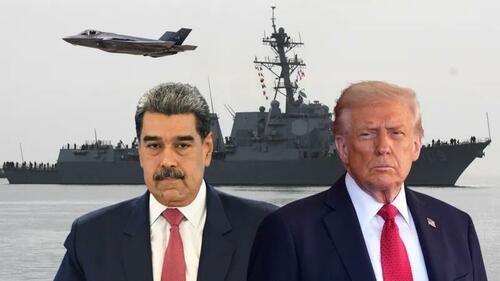 Via BBC
Via BBC


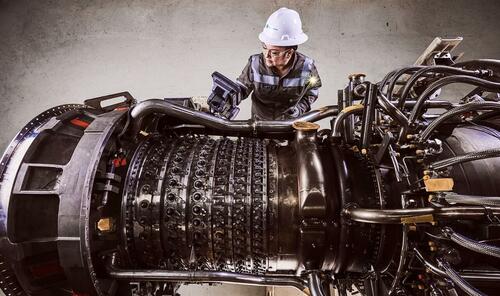










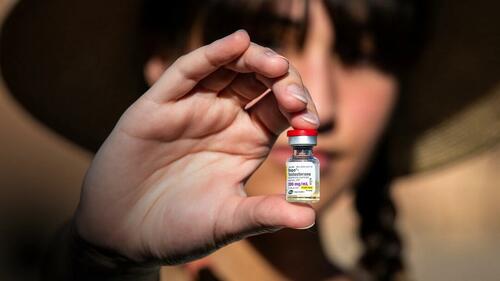 Chloe Cole, who began transitioning at age 12 and now regrets surgically removing her breasts, holds testosterone medication used for transgender patients in Northern California on Aug. 26, 2022. John Fredricks/The Epoch Times
Chloe Cole, who began transitioning at age 12 and now regrets surgically removing her breasts, holds testosterone medication used for transgender patients in Northern California on Aug. 26, 2022. John Fredricks/The Epoch Times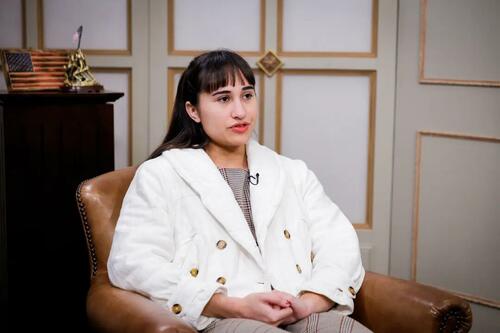 Chloe Cole in Washington on Jan. 12, 2023. The overlap between gender dysphoria and neurodevelopmental issues such as autism and ADHD is more pronounced than people realize, Cole said. Melvin Soto-Vázquez/Cpi Studios For The Epoch Times
Chloe Cole in Washington on Jan. 12, 2023. The overlap between gender dysphoria and neurodevelopmental issues such as autism and ADHD is more pronounced than people realize, Cole said. Melvin Soto-Vázquez/Cpi Studios For The Epoch Times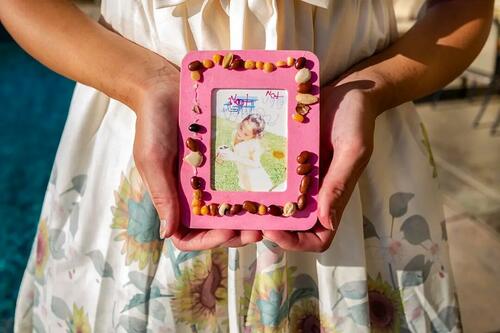 Chloe Cole holds a childhood photo in Northern California on Aug. 26, 2022. Cole recalled that around fourth grade she started to have difficulty coping with her body beginning to mature—‘a common sentiment amongst people who have either ADHD or autism.’ John Fredricks/The Epoch Times
Chloe Cole holds a childhood photo in Northern California on Aug. 26, 2022. Cole recalled that around fourth grade she started to have difficulty coping with her body beginning to mature—‘a common sentiment amongst people who have either ADHD or autism.’ John Fredricks/The Epoch Times Attorney Erin Friday joins “Our Duty” supporters at the California State Capitol Building in Sacramento on Aug. 28, 2023. Friday gained national attention for successfully steering her daughter with ADHD away from identifying as a transgender male. John Fredricks/The Epoch Times
Attorney Erin Friday joins “Our Duty” supporters at the California State Capitol Building in Sacramento on Aug. 28, 2023. Friday gained national attention for successfully steering her daughter with ADHD away from identifying as a transgender male. John Fredricks/The Epoch Times Pediatrician Dr. Hilary Cass speaks about the publication of the Independent Review of Gender Identity Services for Children and Young People in London on April 9, 2024. The report recommends screening children for neurodevelopmental conditions, including autism, as well as for mental health issues. Yui Mok/PA Wire
Pediatrician Dr. Hilary Cass speaks about the publication of the Independent Review of Gender Identity Services for Children and Young People in London on April 9, 2024. The report recommends screening children for neurodevelopmental conditions, including autism, as well as for mental health issues. Yui Mok/PA Wire


 Federal officers arrest a man in the District of Columbia on Aug. 30, 2025. Tasos Katopodis/Getty Images
Federal officers arrest a man in the District of Columbia on Aug. 30, 2025. Tasos Katopodis/Getty Images
Recent comments